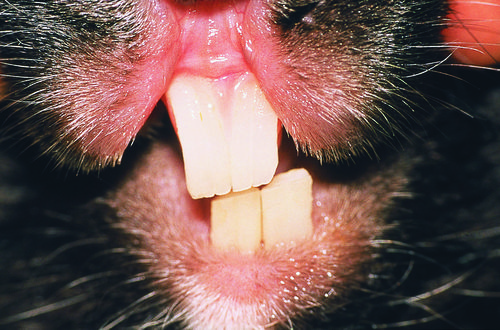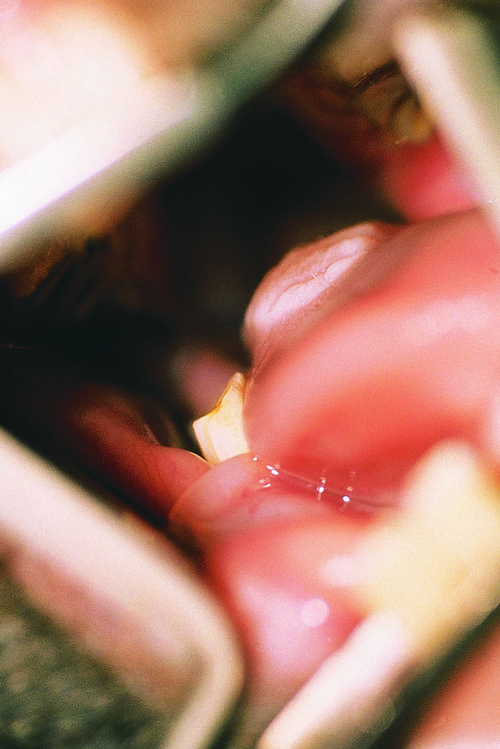Difference between revisions of "Veterinary Dentistry Q&A 21"
(No difference)
| |
Latest revision as of 20:43, 15 October 2011
| This question was provided by Manson Publishing as part of the OVAL Project. See more Veterinary Dentistry Q&A. |
This rabbit was approximately one year old. It had been fed on a concentrate ration (pellets and grain) without access to fresh herbage or hay since weaning.
| Question | Answer | Article | |
| What abnormality/abnormalities can be seen on these photographs? | Oblique wear of the incisor teeth. The mandible is also displaced to the left. As the abnormal wear pattern is slanting in the same direction it is likely that the mandibular position is significant, particularly as the rabbit was conscious when the photograph was taken. Rabbits have a normal wide range of lateral mandibular movement, so this positioning could have been caused by the method of restraint. |
Link to Article | |
| What is/are the likely cause(s)? | The abnormal wear pattern suggests a functional problem associated with lateral chewing movements. This could be due to skeletal, neurologic, muscular, or temporomandibular joint problems, or intraoral pathology. Abnormal wear of the cheek teeth can lead to physical restriction in the range of jaw movement. Conscious alteration of chewing pattern is probably the most common cause of subtle abnormalities such as this. In this particular case, the diet was easily chewed, little grinding being required before the food was swallowed. When fed such a diet there is a tendency for rabbits to make reduced lateral chewing movements, resulting in insufficient wear to the lingual surfaces of the mandibular and buccal surfaces of the maxillary cheek teeth. In the case illustrated here the rabbit had developed sharp spikes only on the lingual surface of the mandibular cheek teeth on the right-hand side of its mouth. Occlusal equilibration to return the teeth to their normal contour, followed by introduction of a more abrasive (normal) diet of hay and fresh grass, which required considerable chewing effort, prevented recurrence over a five-year follow-up period. |
Link to Article | |
| How significant is this in a six-month-old rabbit compared with the same problem in an eight-year old rabbit? | The significance of dental problems in animals with continuously growing teeth generally declines with age. If a minor abnormality has taken eight years to develop it is not likely to progress rapidly, making successful long-term control much more likely. In a young animal such problems are frequently an indication that ongoing control measures will be required. |
Link to Article | |

